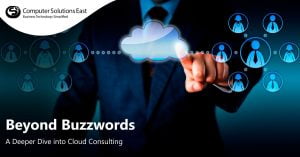What are the aspects of Data Sharing to consider when managing the Public Health IT Infrastructure
Over the last few decades, medical progress has accelerated at an incredible rate, resulting in significant health outcomes improvements. According to UN statistics, global infant mortality, or the percentage of deaths among children aged 5 and under, had decreased from 19 percent in 1960 to just under 4 percent in 2017. Over the same time period, the United States mortality rates declined from 26 per 1000 to under 6 per 1000 even before the pandemic.

On the other hand, medical progress is quite evident with the IT solutions for healthcare industry. Data analysis will help practitioners and politicians target and refine services for all those who need them the most as medical research progresses to a halt. Linking data from several sources—thinking beyond clinical data to consider the social factors that influence wellbeing—can rethink care and outreach.
For instance, businesses have shown the value of data sharing by identifying the population most at risk of infant mortality – 50% of child deaths are caused by a small subset of 1.6 percent. Programs governed by IT solutions for healthcare industry can also be customized to specific subgroups based on previous success in similar situations.
These possibilities are possible thanks to the combined study of diverse datasets, which produces knowledge and provides social meaning with IT services in the healthcare industry as the people represent to policymakers at all levels.
Taking ownership of outcomes
Too frequently, program management is hampered by a struggle between form and purpose, which prevents people from seeing concrete outcomes. Governments are organized to efficiently execute services rather than to successfully achieve the results for which they were initially conceived. The Medicaid program, for example, was created not only to provide health care to low-income Americans but also to increase the health and very well of American families while also providing greater economic stability to the region. On the other hand, specific Medicaid programs monitor and gather data relevant to the program administration with its IT solutions for healthcare industry instead of residents’ wellbeing and welfare.
The details needed to measure essential indicators that trace back to the central intent of services and consider the meaning of the people they represent are seldom kept in transactional processes that sustain IT service implementation. The material, on the other hand, is frequently seen elsewhere in the state.
Overcoming the fear of data sharing
A great deal of care is necessary to ensure that sensitive information does not reach its approved usage limits. It is observed that such excuses are mostly not based on law or program constraints but anxiety.
Many program leaders with whom we work have noticed that the allowable usage stretches dramatically beyond their expectations. Also, the data are even more useful in collective research, which provides insight and better results for individuals.
It becomes much easier to overcome the data-sharing obstacle after leaders agree that data-sharing is in the public’s best interest. Managed IT services for healthcare allow their program to run through a network of private officers and legal representation who usually find a way to enable the use of records.
Unfortunately, it is not the end of data sharing that allows users. Once data have been accepted for distribution, organizations also have issues ensuring that data are used safely, efficiently, and responsibly. This refers to the exchange of data across agencies and is more difficult when external businesses or analysts are involved.
Using technology for secure, effective data sharing
Technology will not fully solve the problems described above, but it will make things much simpler. Workflows and document management make it faster and easier to carry out data-use agreements. Metadata management, data governance, and other data documentation solutions can reduce the likelihood of data being misinterpreted while also speeding up data analysis. The barriers to generating analysis are lower with point-and-click business intelligence visualization tools.
Such tools are fairly popular in the industry and are readily available from commercial vendors. There are few resources available to resolve the specific issues that policymakers and other highly controlled entities have when IT solutions for healthcare industry integrate data sets.
Accurately integrating data and allowing advanced research while ensuring sufficient use are two of these concerns. Their approach necessitates a scalable, fault-tolerant approach for bringing disparate data together, as well as a stable, elastic framework that allows for rigorous calculations and collaboration.
Public and health data can be complicated, problem-solved, redundant, deceptive, contradictory, and otherwise difficult to interpret. These factors make it incredibly difficult to link disparate data because shared unique identifiers across datasets are missing. In the last eight years, we have established a tunable, probabilistic record solution which deals with all these problems. IT solutions for healthcare industry can come in handy if the medical provides false positive and false negative matches and is on a scale. It can connect and deduce billions of records in minutes in a typical cloud architecture for platform agnostics.
A reliable virtual data analysis room solves countless obstacles in dispersed internal and external teams to effective collaborative analytics. As the management of coding repositories has revolutionized the software development cycle, the virtual data review room allows teams to operate with the same version of data, gain valuable transformations and corrections, are free of computer limitations, and can still easily manage the code using a shared repository.

More importantly, managed IT solutions for healthcare industry will make data managers and owners responsible for ensuring the safe and effective use of data—they can check all data and authorize the study before it is implemented. Our team has established the Collaborative Research Environment (CoRE) as an essential basis for data analysis.
Road Ahead
Governments, health agencies, non-profit aid initiatives, and others maintain a wealth of knowledge that can be used to tailor programs to the most benefiting individuals. Data can and must revitalize our public health policy and need-based services. It can keep us continually moving towards what all these programs were originally intended to build.
Together, we will overcome ownership and fear barriers while utilizing technology to promote responsible, cross-organizational data sharing and collaboration. Insight from evaluating diverse data will help us make the best use of modern clinical technologies and implement social services where they are most needed. We will increase medical innovation by linking the knowledge to the people it affects, fine-tuning data care and outreach, and enhancing more lives. And now we can do it.
Share This Post


